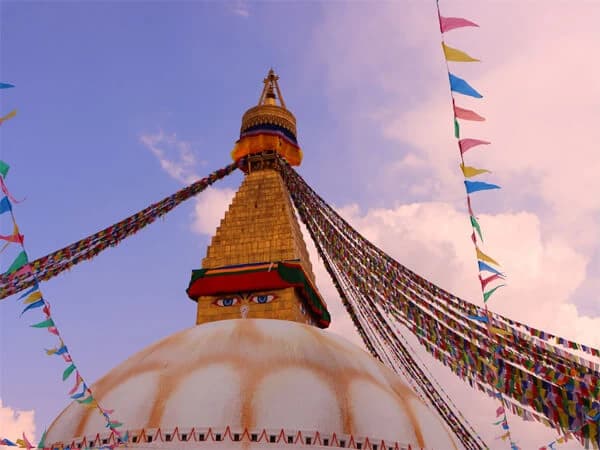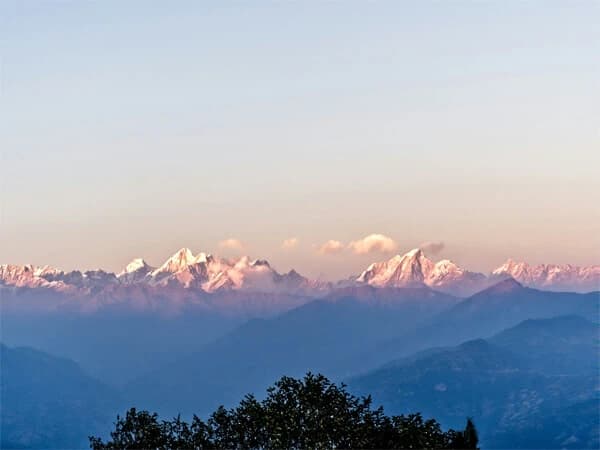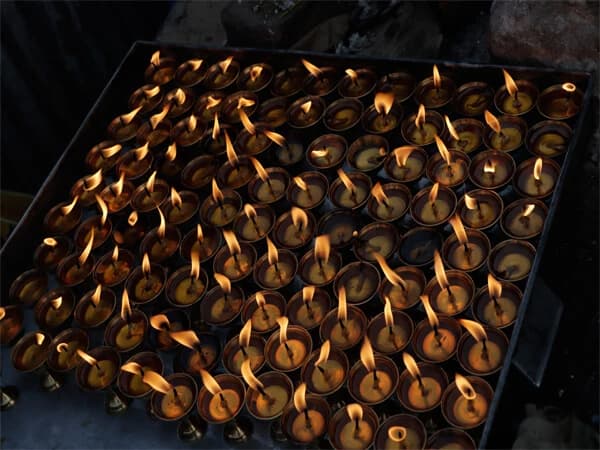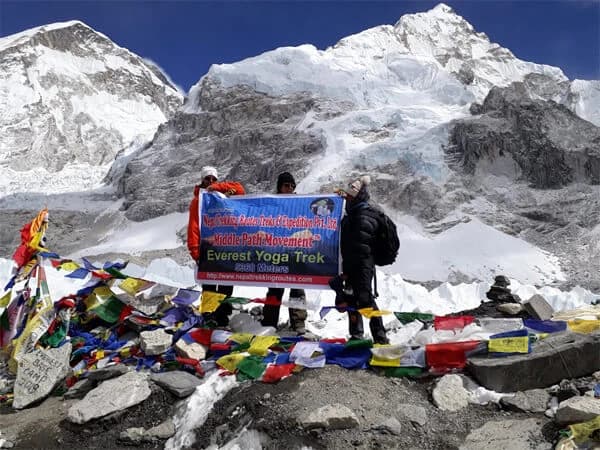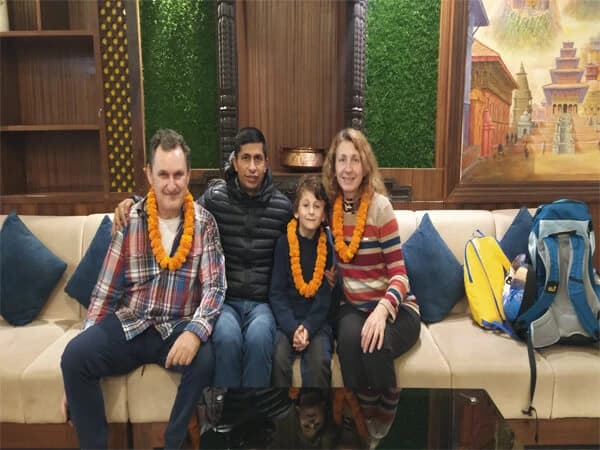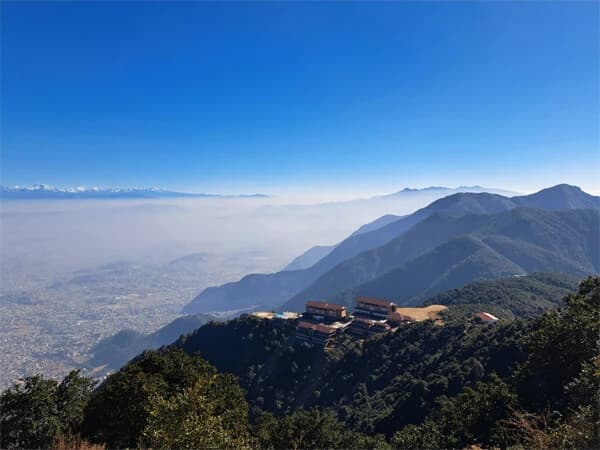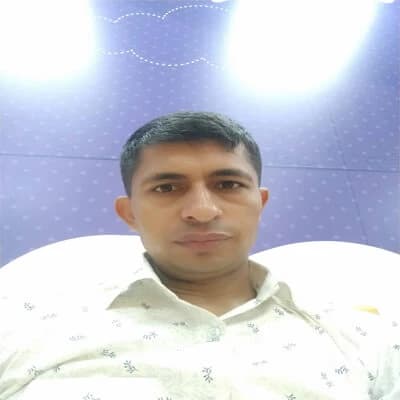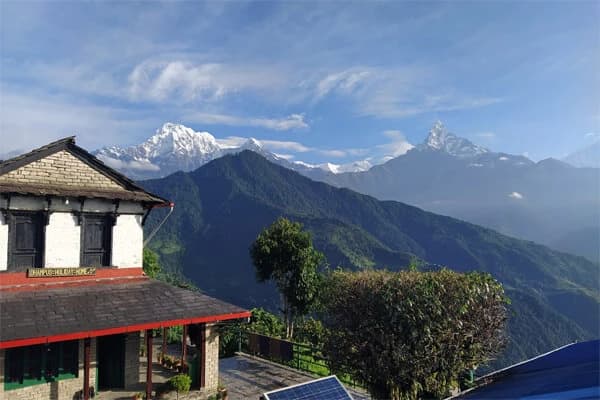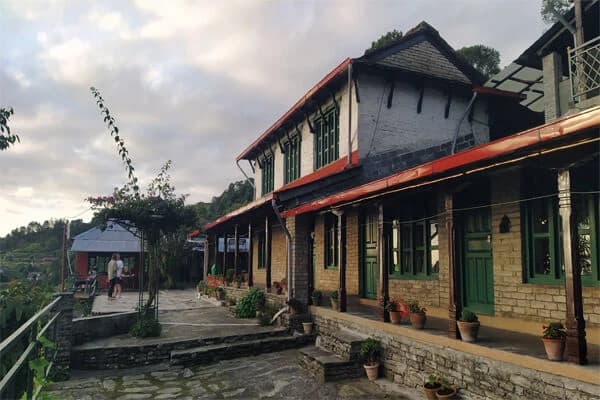The Kathmandu sightseeing tour itinerary is ideal for explore Nepal cultural core in a day or two. This ancient city is a living museum, with centuries-old temples, bustling bazaars, and sacred stupas coexisting harmoniously with everyday life. From the aroma of incense drifting from monasteries to the colorful sounds of bells and chanting, Kathmandu provides a sensory experience unlike any other.
Kathmandu will be more welcoming to visitors in 2025/26 than ever before. Roads have improved, hotels range from luxury to local homestays, and guided tours are readily available. But what actually distinguishes the city is its diverse blend of religions, traditions, and timeless architecture. Even a short time here can feel rich and gratifying if you plan your itinerary well.
Whether you're viewing the sunrise at Swayambhunath, meandering through the courtyards of Kathmandu Durbar Square, or spinning prayer wheels at Boudhanath Stupa, every moment exposes something profound. This guide will help you choose the best sightseeing route, whether you just have one day or three. Understanding the spirit of the city and connecting with its people, stories, and soul is more important than simply viewing places. Let's begin the adventure through Kathmandu.
Why Visit Kathmandu in 2026/27?
Katmandu is more than just a city. It's a feeling, a blend of ancient traditions, vibrant bustle, and friendly faces. Visiting Kathmandu has never been more rewarding. The city has undergone significant changes throughout the years, particularly following the 2015 earthquake. However, temples have been wonderfully repaired, roads have been upgraded, and travel services are more coordinated.
What distinguishes it, is how old and modern mingle together. You can spend the morning walking through a 1,000-year-old royal square and the afternoon sipping a coffee at a modern Thamel café. Kathmandu is full with contrasts, and that's part of its appeal.

Another excellent reason to attend this year is the festivals. Kathmandu is always active, but during cultural festivals, it becomes amazing. If you're lucky, you might see Indra Jatra, a celebration in Durbar Square when villagers gather to celebrate with dances, music, and the rare sight of Kumari, the living goddess. Perhaps you'll be there for Buddha Jayanti, a day when Buddhists light lights and pray at Boudhanath and Swayambhunath.
Also, more tourists are choosing Kathmandu as their base for exploring Nepal. It serves as the entryway to experiences such as the Everest Base Camp trek, Pokhara tours, and Chitwan jungle safaris. Even if you're only here for a short time, the city itself has enough sights, stories, and flavors to make lasting memories.
In short, 2025/26 is the ideal time to see Kathmandu shine alive with history, brimming with vitality, and as hospitable as ever.
How to Plan Your Kathmandu Sightseeing Tour
Planning a sightseeing tour in Kathmandu does not have to be complicated. It is actually fairly enjoyable if you know what to expect. First, determine when you want to visit. The ideal seasons are spring (March-May) and autumn (September-November). These seasons provide beautiful skies, pleasant temperatures, and breathtaking vistas of the valley. The monsoon season (June to August) can bring heavy rain and muddy roads, while winter (December to February) can be cold, particularly in the mornings.
Next, how many days do you need? If you only have one day, you may still visit the biggest attractions, including Swayambhunath, Pashupatinath, and Boudhanath. If you have two or three days, you can visit Patan and Bhaktapur, as well as take a short hike or cable car ride to see the mountains.
You should also consider how you plan to explore the city. Some people prefer going on guided tours with a local expert who tells the history and stories of each location. Others prefer self-guided excursions based on a map or app. Alternatively, if you're traveling with family or prefer a slower pace, reserving a private vehicle is an excellent option.
If you don't want to plan everything yourself, try booking with a reputable local business such as Nepal Trekking Routes. We can arrange everything—transport, guides, and tickets so you can simply enjoy the journey. We also know how to avoid traffic, plan your excursions, and show you local treasures that tourists frequently overlook.
With proper planning, your Kathmandu sightseeing tour may be smooth, culturally enriching, and full of delightful surprises.
What are the best Kathmandu Sightseeing Tour Itinerary?
If you only have one day, don't worry you may still take Kathmandu sightseeing tour of the city's most famous and stunning attractions. This one day Kathmandu tour itinerary is ideal for anyone looking to explore the city's culture, religion, and charm in a short period of time. Allow me to guide you through how your day could go.
Morning: A Spiritual and Cultural Start.
Swayambhunath Stupa tour (Monkey Temple).
Start your day early, ideally immediately after sunrise. The finest location to start is Swayambhunath Stupa tour, commonly known as the Monkey Temple. It is situated on a mountaintop and provides a 360-degree view of Kathmandu Valley. The golden spire, gigantic Buddha eyes, and fluttering prayer flags create a serene, spiritual environment.
You'll have to walk a long stair to get to the top, but believe me, it's worth it. You'll witness monkeys playing, locals praying in the morning, and the city slowly waking up below you. If you prefer photography or calm periods, this location offers both.
Kathmandu Durbar Square tour.
After Swayambhunath, descend to Kathmandu Durbar Square, which is located in the heart of the old city. This area, previously the imperial palace of the Malla monarchs, is filled with historic temples, pagodas, and traditional Newari architecture. Walk through the Hanuman Dhoka Palace complex, admiring the intricately carved wooden windows and observing local life. You could even see the Kumari, the living goddess, if her window is open to guests. The square is a living museum, not only a tourist attraction, but also a key component of local life.
Midday: A taste of local flavor and spiritual power.
A traditional Nepali lunch in Thamel or at a Newari restaurant
After a long morning, you'll undoubtedly be ready for lunch. Thamel is an excellent destination for this, with cafés, bakeries, and rooftop restaurants providing both Nepali and international cuisine. However, if you want to try something authentic, go with Newari food. Try foods such as "chatamari" (Nepali pizza), "bara" (lentil pancakes), and "yomari" (sweet dumplings). These are traditional meals that you will not find anywhere else in the globe.
Pashupatinath Temple Tour.
Once your tummy is satisfied, your next destination should be Pashupatinath, one of the world's most important Hindu temples. Cremation ceremonies are held here, near the Bagmati river. Yes, it's emotional and dramatic, but it's also immensely spiritual, teaching you about Hindu perspectives on life and death.
Non-Hindus are not permitted to enter the main temple, but they can tour the area around it. You can watch holy men (sadhus), and respectfully observe cremation procedures from across the river. It is a remarkable place that has a deep impact on many visitors.
Afternoon: Peace, Prayer, and Beauty
Boudhanath Stupa Tour
Drive just a few minutes from Pashupatinath to the Boudhanath Stupa, one of the world's largest stupas and a Tibetan Buddhist hub in Nepal. You will feel relaxed as soon as you enter. People walk clockwise around the stupa spinning prayer wheels, monks chant in surrounding monasteries, and the smell of incense pervades the atmosphere.
This is an excellent location to simply sit on a rooftop café, enjoy a cup of tea, and observe the world go by. If you're interested, you can go to a neighboring monastery and participate in a short meditation session.
Evening: End with Light and Local Life
Dinner with a View or a Night Walk Around Thamel
Finish your day with a peaceful dinner. Around Boudhanath, you'll discover rooftop restaurants where you may eat while watching the stupa glow in the dusk light. If you return to Thamel, you can explore narrow alleys lined with handcraft shops, bookstores, and pleasant eateries. Your one-day tour concludes with a full heart, a pleased stomach, and fond recollections of Kathmandu's sacred monuments and friendly people.
Multi-day Kathmandu Sightseeing tour Itinerary options

If you have two or three days in Kathmandu, you can see other cultural sites, go on short hikes, and immerse yourself in the native way of life. Here's how to arrange the perfect Multi-day Kathmandu tour.
Ancient Cities and Artisan Traditions
Patan Durbar Square.
Begin your second day by visiting Patan Durbar Square, which is only a short drive from Kathmandu's city center. Patan (also known as Lalitpur) is renowned for its beautiful arts and craftsmanship. The Durbar Square here is less crowded and more tranquil than Kathmandu's, yet equally lovely.
Visit the Patan Museum, one of the best in South Asia for Hindu and Buddhist art. The museum is built in a historic palace and offers stories about gods, monarchs, and ancient architecture in an easily understandable manner.
Wander through surrounding alleys, where local craftsmen still create statues, carvings, and handmade jewelry. You might even spot someone working on a metal Buddha statue in a small workshop!
Bhaktapur Durbar Square.
In the afternoon, head to Bhaktapur, another historic city about 30 minutes distant. Many travelers consider this to be their favorite destination. The city has preserved its old-world beauty. The streets are car-free in the core neighborhoods, with typical red brick buildings lining the streets.
The 55 Window Palace, Vatsala Temple, and the spectacular Nyatapola Temple are must-sees in Bhaktapur Durbar Square. Try the famed "juju dhau" (king curd), a native sweet yogurt that Bhaktapur is known for.
You can also go to Pottery Square, where local potters shape and dry clay pots in the sun. It's a tranquil, beautiful location that provides an excellent opportunity to see authentic local life.
Evening Idea: You can stay in Bhaktapur overnight or return to Kathmandu for dinner. Bhaktapur is also great to explore after dusk, when the lights turn on and the throng disperse.
Nature, Hills, and Quiet Moments
If you have an additional day, here are two excellent possibilities, depending on your preferences: mountain vistas or cultural leisure.
Nagarkot Sunrise and Hill Walk.
Nagarkot is a little hill station approximately 1.5 hours from Kathmandu. It is noted for its panoramic views of the Himalayas, which include Everest on clear days. Stay the night before, or arrive early in the morning to catch the sunrise.
After viewing the mountains glow gold, you can continue for a short trek around the ridge. It's peaceful, lush, and provides a welcome respite from the hustle and bustle of daily life. This option is ideal if you want to get a taste of nature without embarking on a full journey.
Chandragiri Hills Cable Car and Viewpoint
If you want adventure and sights without a big climb, Chandragiri Hills is a great spot to go. It's only 40 minutes from Kathmandu and features a magnificent cable car trip to the top of a hill with a viewpoint, temple, and picnic areas. On a clear day, you can see the Kathmandu Valley as well as snowy peaks from the summit. It's both family-friendly and restful.
Add-On: Garden of Dreams and Thamel Shopping
Back in Kathmandu, spend your final evening at the Garden of Dreams, a lovely historical garden near Thamel. It's an ideal spot to unwind, read a book, or nap. And, if you haven't already, now is the time to shop in Thamel you'll find souvenirs, singing bowls, trekking gear, and local crafts. Bargaining is part of the pleasure!
Transportation and Accessibility
While organizing your Kathmandu City Tour, think how you'll get around. Particularly during rush hours, Kathmandu can be a bustling and somewhat hectic city. Understanding the fundamentals, however, makes it far simpler to discover the fantastic places to visit in Kathmandu.
Booking a private vehicle is the most comfortable alternative, particularly if you're selecting a Kathmandu tour package from a local company like Nepal Trekking Routes. Without having to worry about parking or navigating the roads, you may visit several locations in a single day when you rent a private vehicle with a driver. Additionally, it saves you time and effort, particularly if you like to visit locations like Bhaktapur, Pashupatinath, or Boudhanath in a one day.
You can use ride-sharing applications like Pathao or local taxis if you're on a tight budget. If you're taking a street taxi, just make sure to agree on the fare in advance because they don't always utilize the meter.
Walking is actually the greatest option for short distances, particularly in places like Thamel, Asan, or the vicinity of Kathmandu Durbar Square. You wouldn't see these neighborhoods if you were driving since they are packed with little lanes, antique stores, street food sellers, and secret temples.
Another choice is to take a tourist bus, particularly if you're traveling with a group on a Kathmandu cultural tour. These buses are more structured than standard public transportation and typically travel a predetermined itinerary that passes by the main locations. They do have a schedule, though, and might not offer as much flexibility as a personalized tour.
For a short city tour, you can also rent a bike rickshaw if you want a different kind of experience. Exploring the town's older neighborhoods is enjoyable, particularly those close to Ason Bazaar, Freak Street, and Indra Chowk.
Although Kathmandu's accessibility is getting better, there are still obstacles to overcome, particularly for visitors with mobility impairments. Sidewalks may be small or cracked in some spots, and many historic sites have uneven walkways or staircases. On the other hand, carefully thought-out Kathmandu tour packages can assist in modifying your itinerary to make your journey more comfortable and enjoyable.
Permits and Entrance Fees
The majority of the well-known places to visit in Kathmandu are inside UNESCO World Heritage Sites, and entry is for a small fee. The ancient temples, palaces, and monuments you will see during your cultural tour of Kathmandu are preserved thanks to these payments.
The entry costs as of 2025/26 are approximated here (they may vary slightly):
- Kathmandu Durbar Square: NPR 1000 for foreigners
- Swayambhunath (Monkey Temple): NPR 500
- Boudhanath Stupa: NPR 400
- Pashupatinath Temple: NPR 1000 (Note: non-Hindus can observe the main temple from the riverbank, but they are not permitted inside.)
- Patan Durbar Square: NPR 1000
- Bhaktapur Durbar Square: NPR 1800
Usually, these tickets are sold at the entrance gates. Keep your ticket with you at all times, especially in larger cities like Bhaktapur, where they might examine it more than once.
Verify if the admission costs are included if you are buying a Kathmandu tour package. While some agencies include them in the total price, others let travelers pay for them directly. You can better organize your budget if you ask this question beforehand.
Additionally, since some locations do not take cards, it is a good idea to have cash on hand, ideally in Nepali rupees. In some situations, having a copy of your ID or passport may also be helpful.
Some websites sell combo tickets or passes for extended stays or numerous admissions; however, these are more popular among SAARC countries or Nepali citizens.
Paying the money is only one aspect of entering these sacred places; another is showing respect. Following local norms, avoiding snapping pictures in prohibited locations, and taking off your shoes before entering temples will make your Kathmandu cultural tour more meaningful and enjoyable.
Tips for a Meaningful Sightseeing Experience
Planning a Kathmandu Valley tour involves more than just seeing sights. It includes getting to know the locals, experiencing their culture, and honoring their way of life. These easy pointers can help you make the most of your vacation, whether you're spending a day or several days sightseeing in Kathmandu, Nepal.
Wear appropriate clothing
The top thing to do in Kathmandu frequently includes visiting temples and other places of worship. Since many locations have a strong spiritual value, modest clothing is advised. Cover your legs and shoulders with clothing. Take off your shoes when entering a temple.
Best time for Kathmandu Valley Tour

Begin early in the morning. Temples like Swayambhunath and Boudhanath are calmer and less busy during this time. Photography benefits greatly from the gentle light as well. If you want a peaceful experience, stay away from busy locations like Durbar Square or Pashupatinath in the late afternoon.
Kathmandu sightseeing with local guide
You can add interest to your Kathmandu sightseeing tour by hiring a local guide. They can tell you tales, provide you background information, and point out details you might overlook on your own.
Pay Attention to Traditions
Avoid pointing your foot at holy shrines or statues. Before snapping a picture of someone, ask them. Respect should be shown when watching certain private ceremonies, particularly at Pashupatinath.
Encourage Local Companies
When it's feasible, take part in community tours, dine at Nepali-run cafés, and purchase trinkets from regional artists in Patan or Bhaktapur. In this manner, your visit directly benefits the locals. These tips will help you get the most out of your Kathmandu Valley tour and experience more than simply pictures.
Sustainable and Responsible Sightseeing
Being a cautious traveler is crucial when visiting the best tourist spots in Kathmandu. By doing this, the city's rich history is preserved, and the local communities are supported in addition to the environment. A few small choices can have an important effect, whether you're visiting busy marketplaces or historic temples.
Kathmandu is rich in culture and history. Locations such as Swayambhunath, Pashupatinath, and Boudhanath are not merely tourist destinations; they are also places of worship. Hence, show respect while taking a heritage tour in Kathmandu. Always ask permission before taking pictures of people or rituals, dress modestly, and speak quietly in places of worship.
Avoid using plastic bags and try to bring a reusable water bottle to cut down on waste. Walking is an excellent method of exploration because many of the top attractions in Kathmandu are located in places with congested streets and little foot traffic. In addition to being environmentally responsible, it allows you to take in little details that you may overlook in a car, such as street art, historic wooden windows, and welcoming local businesses.
Buying souvenirs? Select handcrafted items from the local area. This preserves traditional skills and benefits small enterprises. Supporting social businesses that give back to the community is another option.
Lastly, employing a local guide is a kind and wise decision. They have extensive understanding of the history and culture of Kathmandu, and your money stays in the local community.
Being a responsible tourist, you can enjoy the top attractions in Kathmandu while supporting in their preservation for future generations. Travel carefully when organizing your Kathmandu history tour. You'll have a more fulfilling experience and contribute positively.
Some of Frequently Asked Question
How many days are required for Kathmandu sightseeing?
In 1 or 2 days, you can see the major locations. Top sites including Swayambhunath, Boudhanath, Pashupatinath, and Kathmandu Durbar Square can be seen in a one day. However, if you have 2 or 3 days, you can also visit Patan, Bhaktapur, and even make a quick detour to Chandragiri or Nagarkot.
Which are the places to visit in Kathmandu?
The most well-liked locations for sightseeing are:
- Swayambhunath (Monkey Temple)
- Boudhanath Stupa
- Pashupatinath Temple
- Kathmandu Durbar Square
- Bhaktapur and Patan Durbar Squares
These locations showcase Kathmandu's authentic history, culture, and artwork.
Do I need a guide for Kathmandu sightseeing?
Although it's not required, having a local guide enhances the experience. They reveal you secret locations and tell the tales of temples. A handbook is useful if you wish to learn more about history and culture.
How do I get around the city during the tour?
For short distances, you can walk, take a taxi, or drive a private vehicle. Bicycles and tourist vans are also used by certain people. Hiring a car with a driver from our travel company is a smart choice because the roads can get congested.
What should I wear while visiting temples and sacred places?
Wear modest clothes that cover your shoulders and knees. Remove your shoes before entering temples. It’s good to carry a shawl or scarf, especially for women, when entering holy sites.
Conclusion: Kathmandu Sightseeing Tour Itinerary
Kathmandu is like a living museum with its bustling marketplaces, serene stupas, and historic temples. A sightseeing tour in Kathmandu allows you to get a close-up look at Nepal's rich culture and spiritual beauty, whether you have a day or more. Every destination, from the Pashupatinath Temple to the Boudhanath Stupa, narrates a tale of local life, religion, and history.
You can maximize your time by planning beforehand. For a seamless and pleasurable trip, pick the right time of year, dress comfortably, and book your trip through our agency. Remember to take your time at each location, sample the cuisine, and purchase locally made crafts.
Ultimately, Kathmandu is an emotion rather than merely a place to visit. Long after you depart, you are reminded of the warmth of the locals, the charm of historic streets, and the vitality of ancient customs.





